Mazda CX-5 Service & Repair Manual: Synchronizer Mechanism [C66 M R]
Purpose, Function
-
For smooth gear changes, the synchronizer mechanism synchronizes the rotation of the engaging area and engages gears.
Construction
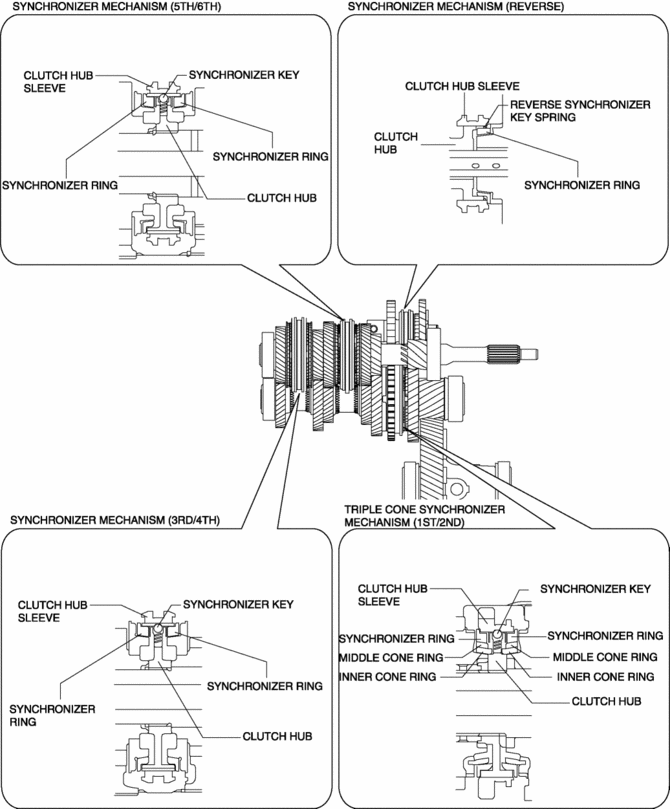
Detent ball-type synchronizer key
-
A detent ball-type synchronizer key has been adopted for the synchronizer mechanism except for the reverse gear.
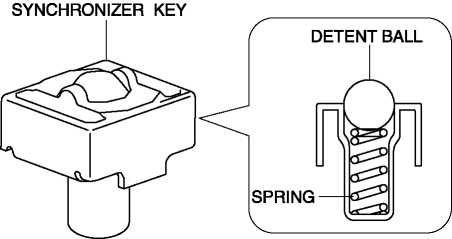
-
The detent ball of this part provides the driver a crisp feel which the driver can realize completed gear changes.
-
Because this part is smaller compared to the conventional synchronizer key, it has contributed to the size reduction of the synchronizer mechanism, and also to the shortened length of the primary and secondary shafts.
-
Because the smaller synchronizer mechanism has reduced the stroke amount of the clutch hub sleeve, the stroke of the shift lever in the cabin has been shortened.
Operation
1GR, 2GR operation
NOTE:
-
For 1st and 2nd gears, a triple-cone synchronizer mechanism has been adopted with which a stronger synchronizing force is provided to synchronize the rotation of the clutch hub and the gear.
-
Here, operation during 2GR operation is described as an example.
1. When the clutch hub sleeve moves toward the 2nd gear side, the synchronizer key follows, and the synchronizer key contacts the end surface of the synchronizer ring.

2. When the clutch hub sleeve moves toward the 2nd gear side, the synchronizer key which follows applies load to the synchronizer ring, and the load is transmitted from the synchronizer ring to the middle cone ring, inner cone ring, and the gear.
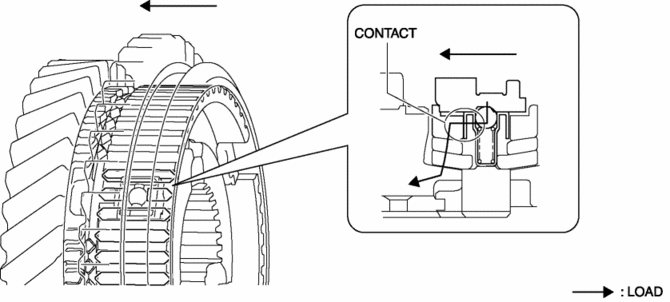
3. The friction force on the contacting surface of the parts is generated by applying load to the parts between the synchronizer ring and the gear.
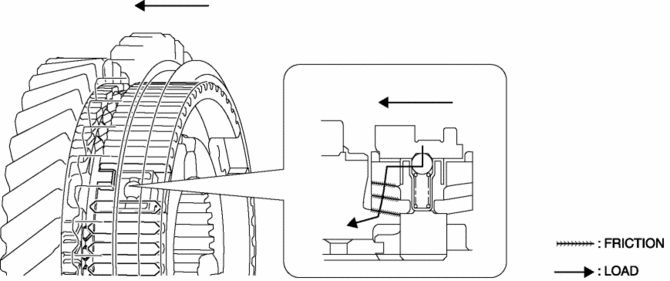
4. For the friction force for the parts, the synchronizer ring rotates only the round groove gap of the clutch hub sleeve.

5. Because the synchronizer ring rotates, the spline of the clutch hub sleeve which moves toward the secondary 2nd gear side and the chamfer of the synchronizer ring are opposed to each other.

6. When the clutch hub sleeve moves toward the secondary 2nd gear side, the transmitted load to the gear from the clutch hub sleeve increases because the spline of the clutch hub sleeve pushes the chamfer of the synchronizer ring.
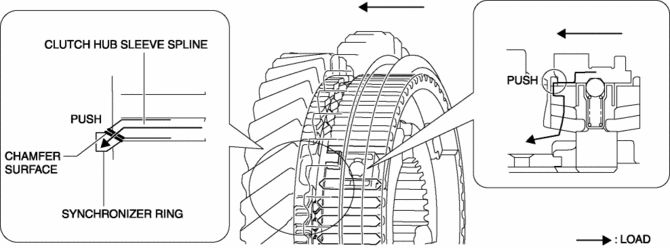
7. The friction force on the contacting surface of the parts is increased by increasing the load transmitted from the clutch hub sleeve to the gear.
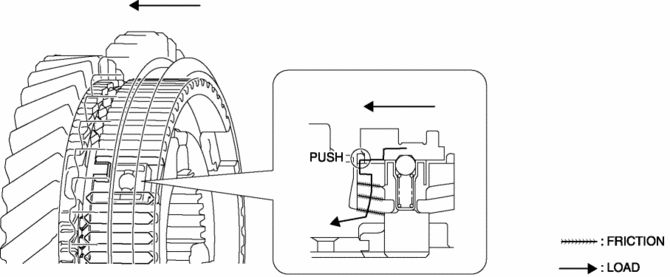
8. The increased friction force decreases the difference in rotation speed between the synchronizer ring, middle cone ring, inner cone ring, and the gear and the rotation speed for the parts is synchronized.
9. When synchronization in rotation speed of the gear and the clutch hub sleeve is performed, the spline of the clutch hub sleeve passes through the synchronizer ring.
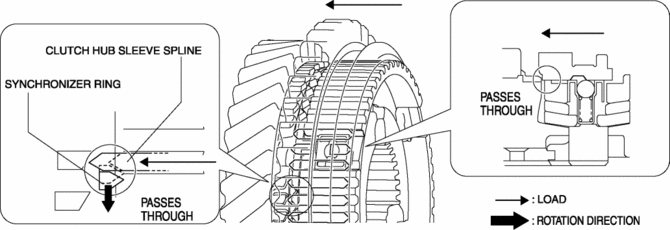
10. When the spline of the clutch hub sleeve passes through the synchronizer ring, the clutch hub sleeve presses down the detent ball and the detent ball is removed from the positioning groove of the clutch hub sleeve because the clutch hub sleeve moves toward the secondary 2nd gear side.
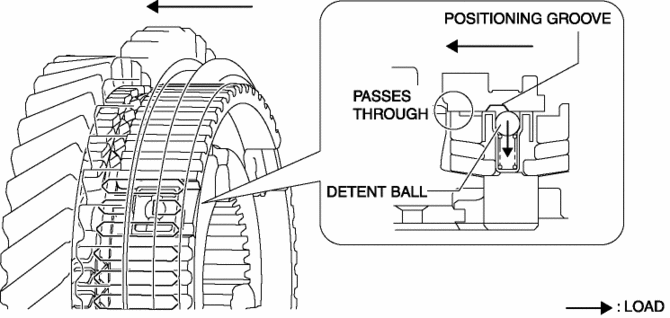
11. When the clutch hub sleeve moves toward the secondary 2nd gear side, the spline of the clutch hub sleeve and the spline of the gear are engaged, and the shifting operation is completed.
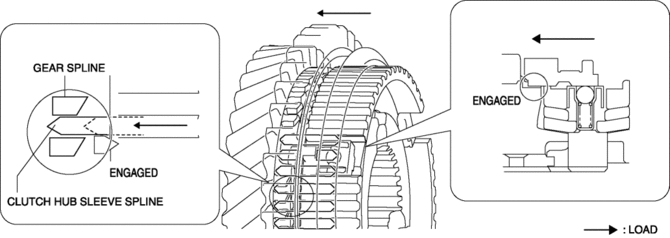
3GR, 4GR, 5GR, 6GR, reverse operation
NOTE:
-
Here, operation during 4GR operation is described as an example.
1. When the clutch hub sleeve moves toward the 4th gear side, the synchronizer key follows, and the synchronizer key contacts the end surface of the synchronizer ring.
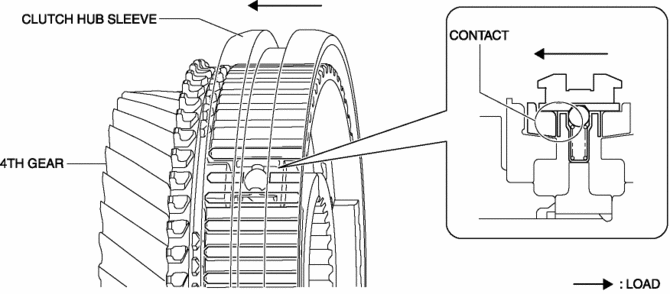
2. When the clutch hub sleeve moves toward the 4th gear side, the following synchronizer key applies load to the synchronizer ring, and the load is transmitted from the synchronizer ring to the gear.
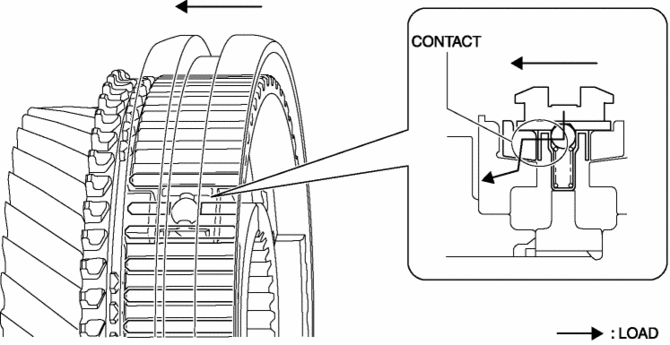
3. The friction force on the contacting surface of the synchronizer ring and the gear is generated by applying load to the parts between the synchronizer ring and the gear.
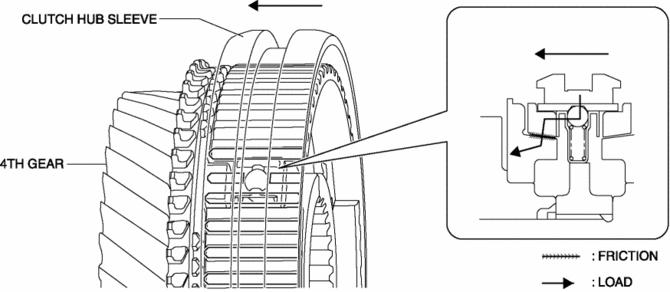
4. For the friction force of the synchronizer ring and the gear, synchronizer ring rotates only the key groove gap of the clutch hub sleeve.
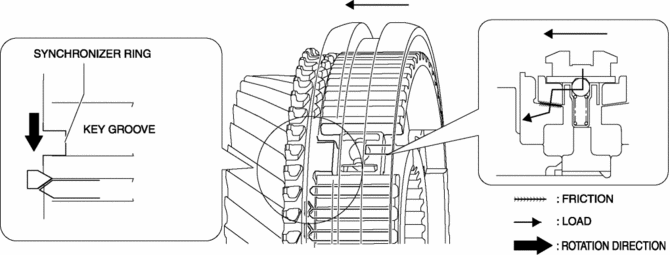
5. Because the synchronizer ring rotates, the spline of the clutch hub sleeve which moves toward the 4th gear side and the chamfer of the synchronizer ring are opposed to each other.
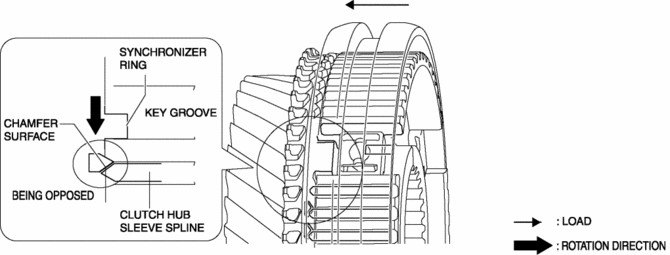
6. When the clutch hub sleeve moves toward the 4th gear, the load transmitted from the clutch hub sleeve to the gear increases because the spline of the clutch hub sleeve pushes the chamfer of the synchronizer ring.
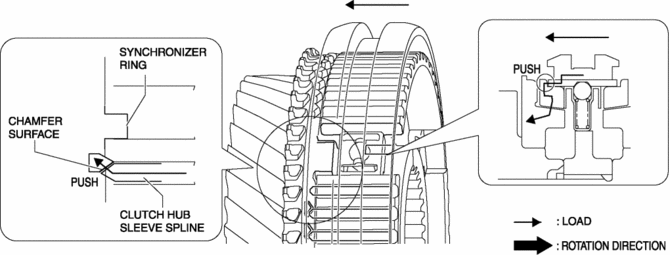
7. The friction force on the contacting surface of the parts is increased by increasing the load transmitted from the clutch hub sleeve to the gear.
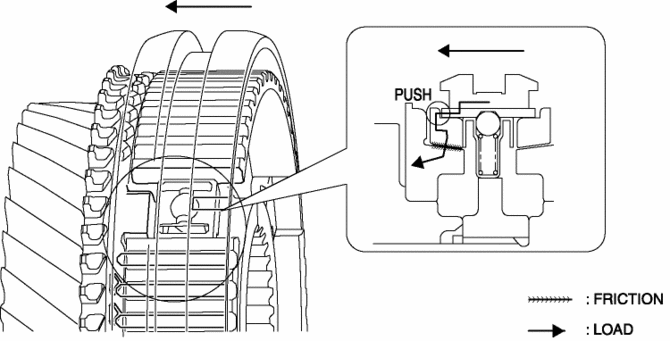
8. The increased friction force disappears the difference in the rotation speed between the synchronizer ring and the gear, and the rotation is synchronized.
9. When synchronization in rotation speed of the gear and the clutch hub sleeve is performed, the spline of the clutch hub sleeve passes through the synchronizer ring.
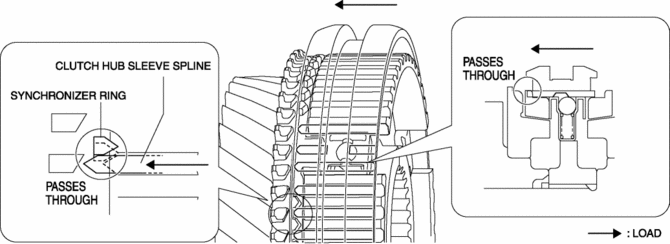
10. When the spline of the clutch hub sleeve passes through the synchronizer ring, the clutch hub sleeve presses down the ball and the ball is removed from the positioning groove of the clutch hub sleeve because the clutch hub sleeve moves toward the secondary 4th gear side.
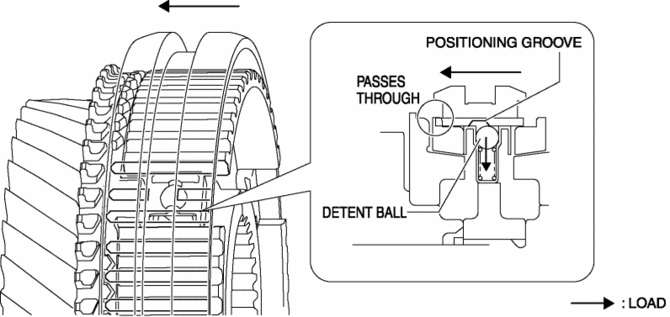
11. When the clutch hub sleeve moves toward the secondary 4th gear side, the spline of the clutch hub sleeve and the spline of the gear are engaged, and the shifting operation is completed.
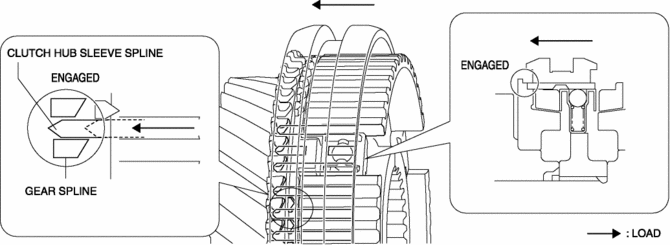
 Shift Control Module Removal/Installation [C66 M R]
Shift Control Module Removal/Installation [C66 M R]
Removal
1. Shift the shift lever to the neutral position.
2. Remove the plug hole plate..
3. Disconnect the negative battery cable..
4. Remove the air cleaner and air hose as a single unit..
...
 Turbine/Input Shaft Speed Sensor, Output Shaft Speed Sensor [Fw6 A EL, Fw6 Ax
EL]
Turbine/Input Shaft Speed Sensor, Output Shaft Speed Sensor [Fw6 A EL, Fw6 Ax
EL]
Purpose/Function
The turbine/input shaft speed sensor detects the rotation speed of the input
shaft (low clutch drum).
The output shaft speed sensor detects the rotation speed of the ...
Other materials:
Push-Starting
Do not push-start your Mazda.
WARNING
Never tow a vehicle to start it:
Towing a vehicle to start it is dangerous. The vehicle being towed could surge
forward when its engine starts, causing the two vehicles to collide. The occupants
could be injured.
CAUTION
Do not push-start a vehicle that ...
Rear Seat Center Armrest Removal/Installation
1. Operate the push knob (RH) and lower the rear seat back (RH).
2. Remove screw A.
3. Remove the rear seat center armrest hinge cover (RH) in the direction of the
arrow (1) shown in the figure while setting hook A aside.
4. Remove bolt B.
5. Remove the rear seat center armrest in ...
All Wheel Drive System
Outline
The electronic all-wheel drive (AWD) control system automatically and optimally
controls drive torque distribution for the front and rear wheels. Due to this
off-road mobility and driving stability are improved.
Based on the input signals from each sensor, the AWD contro ...
